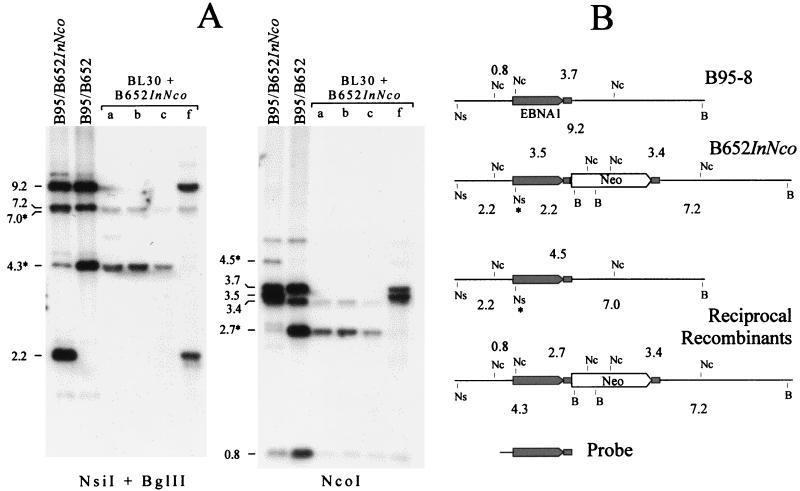FIG. 6.
Stable infection of BL30 cells with B652InNco EBV selects for recombinants with the EBNA-1 gene restored. (A) Southern analysis of 0.5 μg of DNA from superinfected B95-8 clones carrying either B652InNco virus or B652 virus and of 5 μg of DNA from four G418-resistant clones of BL30 infected with virus released from B95/B652InNco superinfected cells. The DNA was cut with a combination of NsiI and BglII (left) or with NcoI (right). Approximate sizes are given for bands of interest. DNA fragments that resulted from recombination between the two viruses, B652InNco and B95-8, are marked with an asterisk. (B) Restriction site maps of the relevant part of the B95-8 and B652InNco viral genomes and their recombination products. B, BglII; Nc, NcoI; Ns, NsiI. An asterisk marks the NsiI site created by the frameshift mutation. The probe that was used contained the sequences 3′ of the EBNA-1 gene that were duplicated (small filled rectangle) and are present on both sides of the selective marker. Note that one of the reciprocal recombinants is identical to B652. (The probe contained, in addition to the region shown, about 100 bp of EBV sequence to the left of oriP, so EBV DNA fragments of 5.1 kb in the NcoI digestion and 0.6 kb in the NsiI-BglII digestion [not shown] were also detected weakly.)

